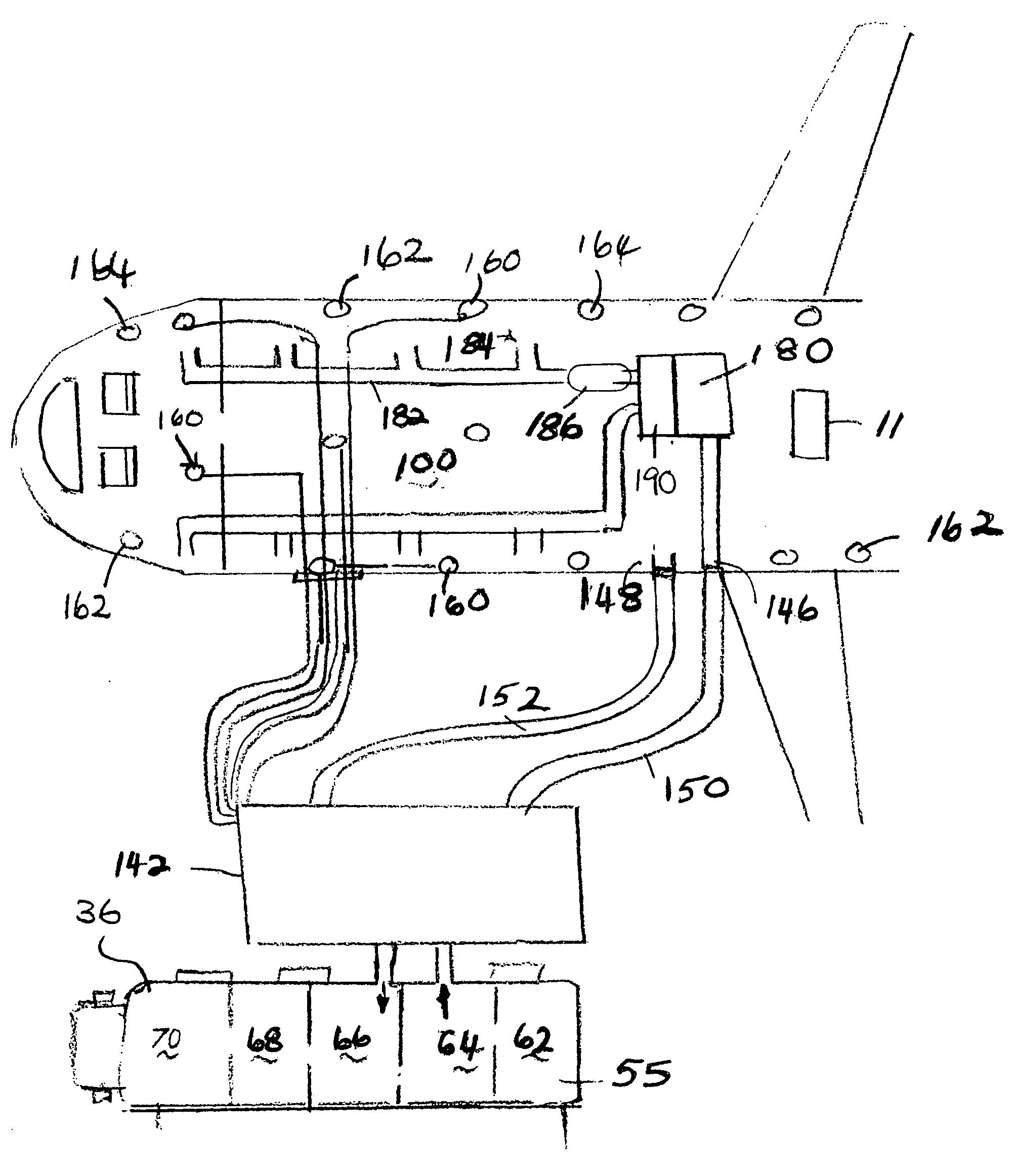Aircraft and passenger decontamination system
a decontamination system and aircraft technology, applied in the field of vehicles, can solve the problems of high toxicity of chlorine dioxide, high risk of aircraft being intentionally contaminated with chemical contamination, and having to be recovered
- Summary
- Abstract
- Description
- Claims
- Application Information
AI Technical Summary
Benefits of technology
Problems solved by technology
Method used
Image
Examples
Embodiment Construction
[0024] With reference to FIG. 1, a system for decontamination of an aircraft is shown positioned on a runway adjacent a contaminated aircraft. “Contamination,” as used herein refers to biological agents and / or chemical agents which are known to be pathogenic towards people or animals and / or are capable of causing severe illness. By “decontamination,” it is meant the destruction and / or removal of pathogenic agents (chemical and / or biological). In the case of biological pathogenic agents, the decontamination may rise to the level of sterilization, although lower levels of decontamination, such as disinfection and sanitization are also contemplated. In the case of chemical decontamination, conversion of chemical agents to non-harmful or less harmful species takes place. Preferably, the contamination is reduced to a level at which the pathogenic agents no longer pose a significant risk of pathogenic activity.
[0025] With reference to FIG. 2, a schematic diagram of an aircraft decontamin...
PUM
 Login to View More
Login to View More Abstract
Description
Claims
Application Information
 Login to View More
Login to View More - R&D
- Intellectual Property
- Life Sciences
- Materials
- Tech Scout
- Unparalleled Data Quality
- Higher Quality Content
- 60% Fewer Hallucinations
Browse by: Latest US Patents, China's latest patents, Technical Efficacy Thesaurus, Application Domain, Technology Topic, Popular Technical Reports.
© 2025 PatSnap. All rights reserved.Legal|Privacy policy|Modern Slavery Act Transparency Statement|Sitemap|About US| Contact US: help@patsnap.com



